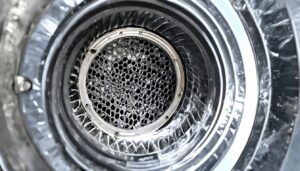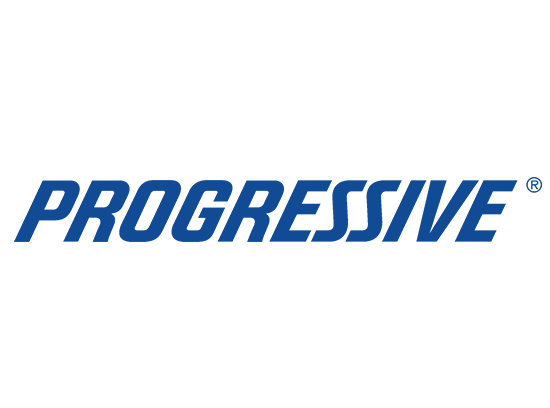Water damage repairs can be expensive if not addressed immediately, especially if mold, mildew and wood rot have already taken hold. Mold, mildew and wood rot can appear just 24 to 48 hours after water leaks into a structure.
Professional water damage assessors will assess the extent of your damage and estimate its restoration costs, typically about $1 per square foot for drying and repair services.
Class 1 in Jefferson County, Kentucky
From burst sprinkler heads, clogged rain gutters or broken water pipes, it’s crucial to address water damage as soon as it occurs – even small leaks can lead to mold growth, creating serious health risks for you and your family. If your plumbing is leaking or your basement floods frequently, hiring an experienced professional to assess and restore damage may be required – the average cost to fix class 1 water damage in Kentucky averages approximately $430 depending on its severity and length of time in place.
Common causes of Class 1 water damage in homes include malfunctioning household appliances, plumbing mishaps and flooding. Preventative maintenance and inspection can help mitigate such problems quickly so as to minimize costly repairs while protecting family health and reducing family stress levels.
Water damage is divided into classes to represent its level of contamination. Only an experienced professional should categorize and classify water damage; homeowners should note that insurance companies typically disallow DIY diagnoses of this damage. Class affects cost for repairs as well as mold growth risks.
Professionals use moisture detectors and hygrometers to inspect the extent of damage and classify it, as well as identify sources of water intrusion to ensure its cessation. With this information in hand, they can estimate both restoration time and costs accurately.
As part of any class 1 water damage restoration project, the initial step should be draining off standing water. This process can be labor-intensive and take several days if the area is large. Once this step has been completed, drying out damaged areas is often next on the agenda; homeowners can do this using fans themselves but professional service providers often possess special equipment and tools necessary for this type of work.
Class 1 water damage restoration services typically involve more than just extracting and drying out damaged areas; they also involve repairing drywall and flooring, sometimes replacing windows and doors as necessary, and in some cases replacing broken windows and doors altogether. Although such projects are costly, they’re vital to creating a safe living environment again.
The cost of water damage can vary depending on a number of factors, including:
- The severity of the damage: The more severe the damage, the more expensive it will be to repair.
- The size of the affected area: The larger the affected area, the more expensive it will be to repair.
- The cost of repairs: The cost of repairs will vary depending on the type of damage and the materials that need to be replaced.
If you have experienced water damage in your home in the Louisville, KY area, it is important to contact a professional restoration company like Emrick Services as soon as possible to assess the damage and begin the repair process. The sooner you take action, the less likely it is that the damage will become worse and the more likely it is that you will be able to recover the full value of your insurance claim.
Class 2
When your home experiences water damage, various factors will determine its repair costs. These include factors like type and amount of water used; extent and severity of damage sustained; repair work required and class of water (temperature, level of cleanliness and presence of contaminants); which all play an integral part. When considering repair costs there are various elements that influence its costs such as type of water used (type); extent and severity of damage sustained as well as repairs required (class of water used determines costs for water damage repair services).
As a general rule, the higher the class of water damage is, the greater and more expensive its cleanup and repair will be. For example, dealing with class 3 damage costs significantly more than handling just class 1 damage because cleaning up class 3 involves dealing with materials that require extensive repairs as well as greater risk for mold growth.
To accurately assess your water damage, it’s recommended that you consult a professional. They can assess the damage and suggest an effective strategy for returning your home back to its usual state. It is also worth remembering that different companies charge different prices; some charge per hour while others consider factors like job size before calculating labor costs.
No matter the source or category of water damage, it’s essential to act quickly in response. Ignoring it may lead to mold growth and serious health complications. You should inspect for structural damage as well as potential safety hazards like exposed powerlines or gas lines, open doors and windows to allow air circulation, plug fans or dehumidifiers into power sockets so moisture can escape quickly, and plug fans or dehumidifiers into power outlets in order to draw out moisture effectively and reduce further damage.
Class 1 water damage is by far the most prevalent form, affecting only part of a room at any given time and limited to carpeting, walls and nearby appliances and fixtures. Cleaning these cases usually costs $150-400 to restore.

Class 3 in Kentucky
Water damage to a home can compromise its integrity, pose health hazards and lower its value, so it’s crucial that homeowners work with an experienced and reputable company when responding to such damage. A number of factors will play a part in how much it will cost to repair after experiencing water damage in their property, such as what kind of liquid was involved and whether there are provisions in their homeowner’s insurance coverage that apply.
Professional water damage assessors categorize water damage according to its source and level of contamination in affected areas. Once they identify its source, they assign levels based on how clean or dirty the water is; Class 1 refers to clean water sources while Class 3 can contain waste such as sewage. Fixing this type of damage requires extensive inspections, removals, replacements and disinfections of all affected surfaces in order to restore them fully.
Mold growth is a main concern when dealing with flooding disasters, with immediate or undetectable growth possible in certain instances. Mold spores may become toxic over time, leading to allergic reactions including sneezing, coughing and headaches among others.
Flood disasters are capable of devastating our families and possessions, especially if substantial water damage occurs within their home. As well as the expense associated with repairs to structural elements, additional costs often incur when cleaning and replacing personal belongings damaged by flooding waters. These expenses range from carpeting, furniture and flooring repairs, electrical appliances replacement costs as well as mattress, upholstered furniture or porous building material replacement costs. Therefore, it is imperative to find a company offering emergency services as soon as the storm strikes in order to minimize downtime caused by such incidents.
Class 4
Calculating the cost of water damage repairs depends heavily on what kind of repair work needs to be completed. For instance, fixing a simple bathroom water leak costs significantly less than dealing with multiple feet of floodwater in your basement. Water damage repair costs vary according to both type and class of damage; professional analysis should help identify them accurately.
Clean water damage repair can be relatively inexpensive to address as it involves only the removal and drying of carpet, flooring, drywall and woodwork. Common sources include leaky faucets or hoses, rain/sprinkler systems or burst pipes.
Dirty water damage repairs are the most expensive to complete because it requires extensive cleanup and reconstruction efforts to restore. Contaminated water poses health risks such as mold growth and mildew growth; thus necessitating professional classification for restoration and repair costs by insurance providers.
At the height of the 2022 Kentucky floods, hundreds of families lost homes and possessions. Breathitt, Knott, Letcher and Perry counties were particularly hard hit due to flooding; their inhabitants being predominantly low-income households that could not afford expensive home repairs after such disasters struck.
Photos showing the power of flood waters was enough to prove its destructiveness; cars stacked atop each other and buildings that had been entirely submerged were alarming images that demonstrated just how intense flood waters could be. Food insecurity also became worse during these devastating flooding events that hit communities affected by disappearing coal jobs.
Policymakers must take measures to ensure the poorest residents in communities affected by disaster aren’t left behind, which can include providing more affordable housing options and increasing access to community resources that support children’s education and healthy development. As a result, communities may become better prepared for future flooding incidents that disrupt economic activity – investing in these communities will enable them to recover more rapidly while reconstruct stronger than before.













